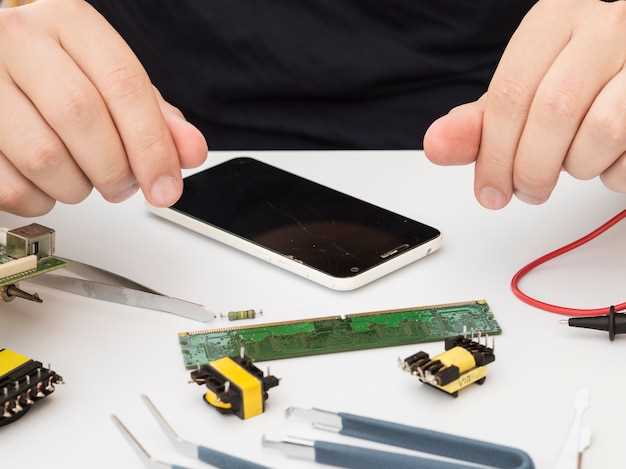
The journey to restore your Samsung Galaxy S20 FE to its initial, unblemished state can be accomplished through a simple yet thorough process known as a factory reset. This procedure returns the device to its default configuration, purging any accumulated data, customizations, or blemishes that may have accumulated over time.
Embarking on this restoration journey empowers you to resolve an array of potential issues, ranging from performance sluggishness to persistent software glitches. Moreover, it provides a clean slate for you to tailor your device to your unique preferences and requirements, ensuring an optimal user experience.
How to Wipe Your Samsung Galaxy S20 FE Clean
Table of Contents

If your Samsung Galaxy S20 FE is experiencing performance issues, a factory reset might be the perfect solution. Resetting your device to its factory settings will erase all data and apps, returning it to its original state. Before proceeding, ensure you have backed up your important data elsewhere, as this process is irreversible.
Follow the steps below to perform a factory reset on your Samsung Galaxy S20 FE:
| Step | Action |
|---|---|
| 1 | Navigate to “Settings” on your device. |
| 2 | Select “General Management.” |
| 3 | Tap on “Reset.” |
| 4 | Choose “Factory Data Reset.” |
| 5 | Enter your device’s unlock password or PIN for confirmation. |
| 6 | Press “Reset” to initiate the factory reset process. |
Reset via Settings Menu
This method is suitable if your device is functional and responsive. Navigate to the Settings menu on your Samsung Galaxy S20 FE and follow the prompts to initiate a factory reset. This option will wipe all data and settings from your device, so it’s crucial to back up any essential information beforehand.
Reset via Recovery Mode
If the conventional methods fail to restore your device, consider resetting it via the recovery mode. This advanced technique bypasses the operating system and offers a comprehensive reset solution.
## Reset via Find My Mobile
If you cannot access your device, you can remotely wipe it using Samsung’s Find My Mobile service. This requires that you have previously enabled the service and that your device is connected to a network.
Reasons for Factory Resetting

Resorting to a factory reset can be a necessary step in a device’s life cycle. This drastic measure entails erasing all stored data and restoring the device to its original, out-of-the-box state. Various scenarios warrant the consideration of this procedure:
Warnings and Precautions
Before undertaking a factory reset, it is crucial to heed important considerations. This guide advises caution and awareness to avoid potential risks and ensure a smooth restoration process. By carefully following the instructions outlined in this guide, you can minimize any adverse consequences and restore your device to its optimal state.
Step-by-Step Instructions for Each Method
Carrying out a factory reset involves utilizing specific techniques or avenues to execute the procedure. This section will provide step-by-step guidance for the various methods available.
Method 1: Through Recovery Mode
- Turn off the device.
- Press and hold Volume Up, Home (if available), and Power buttons simultaneously.
- When the Samsung logo appears, release the Power button, but keep holding the other two buttons.
- Navigate to “Wipe data/factory reset” using the Volume buttons.
- Press the Power button to confirm the selection.
- Select “Yes” to commence the reset process.
Method 2: Via Settings Menu
- Open Settings.
- Select “General Management.”
- Tap “Reset” and then “Factory Data Reset.”
- Authenticate your device if prompted.
- Tap “Reset” to initiate the factory reset.
Method 3: Utilizing Find My Mobile Service
- Sign in to the Find My Mobile website: https://findmymobile.samsung.com
- Locate your device and click “Erase Data.”
- Enter your Samsung account credentials to authenticate.
- Click “Erase” to commence the remote factory reset.
Question-Answer
What is a factory reset and why might I need to do one?
A factory reset is a process of restoring your device to its original factory settings. This means that all data, including apps, settings, and files, will be erased. A factory reset may be necessary if you’re experiencing problems with your device that can’t be resolved by other troubleshooting steps, or if you’re selling or giving away your device and want to protect your personal information.
What should I do before performing a factory reset?
Before performing a factory reset, it’s important to back up all of your important data. This includes photos, videos, contacts, and any other files that you don’t want to lose. You can back up your data to a computer, an external hard drive, or a cloud storage service.
What happens after I factory reset my device?
After you factory reset your device, it will restart and begin the setup process. You’ll be asked to enter your Google account information and set up your device again. All of your data will be erased, and you’ll need to reinstall any apps that you want to use.
Can I recover my data after performing a factory reset?
If you backed up your data before performing a factory reset, you can restore it after the reset. To restore your data, simply follow the prompts on the screen. If you didn’t back up your data, it will be lost forever.
I’ve forgotten my phone’s password and can’t access my S20 FE. Can I still perform a factory reset?
Yes, you can still factory reset your S20 FE even if you’ve forgotten your password. You can use the hardware key combinations described in the article to enter recovery mode and initiate the factory reset process without needing to enter your password.
I’m concerned about losing all my data during the factory reset. What steps can I take to back up my data before proceeding?
Before performing a factory reset, it’s crucial to back up your important data to prevent permanent loss. You can use the built-in Samsung Cloud or Google Drive backup features, or connect your phone to your computer and manually transfer your files to an external storage device. Additionally, you can consult the article’s detailed instructions on how to create a recovery media to extract data after the factory reset.
 New mods for android everyday
New mods for android everyday



